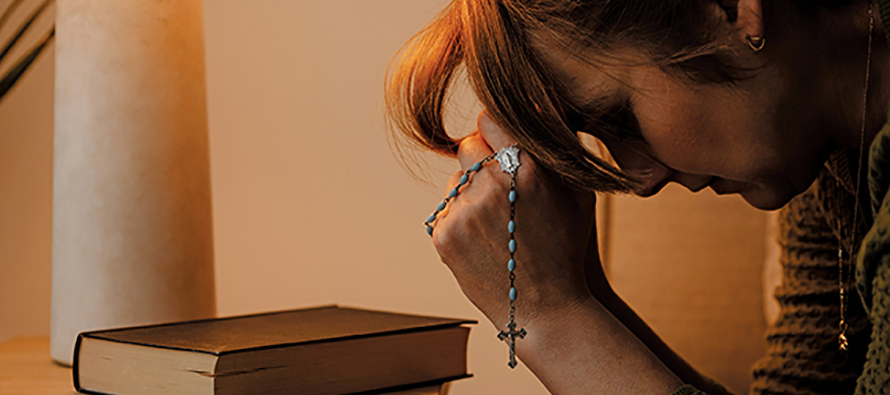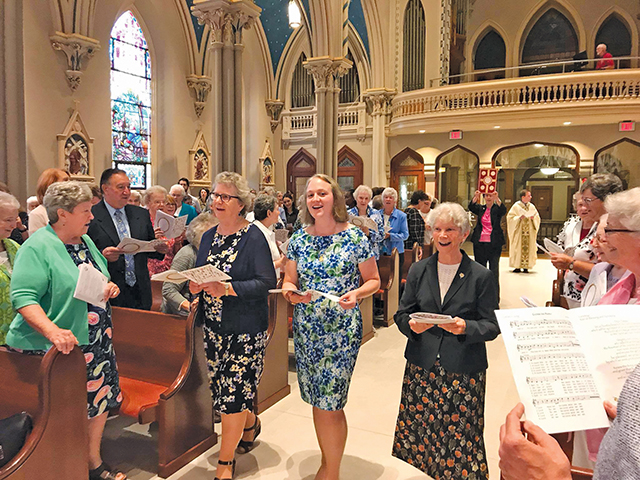Need-to-knows about becoming a nun

ONE IMPORTANT THING to know is that nuns vary quite a bit, from person to person and from community to community. In fact, technically, “nun” refers to cloistered contemplatives, described in this article. “Sister” is technically the term for the women religious you may have met—those serving in the world doing a wide variety of ministries.
Here are four main ways women live as nuns (using the word in its popular sense). Keep in mind that this way of life has been around for centuries and keeps developing, so these categories can be fluid.
1. Apostolic. These are the Catholic sisters serving in parishes, schools, social services, and many other places. They are called to a life of service, community living, and prayer.
2. Monastic. The monastic tradition falls somewhere between apostolic and cloistered life. Monastics place a high value on communal prayer and living together. Many monastics engage in ministry outside the community property.
3. Cloistered contemplative. Nuns in these communities live separated from the rest of the world to be more focused on prayer. They gather several times a day for Mass and a prayer tradition known as Liturgy of the Hours. They also work on-site part of the day to support the community.
4. Missionary. Sisters who belong to a missionary community give witness to the gospel and Good News for the poor in other countries or in areas of their own country where the church is not yet present in a robust form.

Vows
Catholic sisters and nuns typically take three vows: poverty, chastity, and obedience. (Some communities take an additional vow.) Whole books—and a number of VISION articles—have been written about the meaning of each of these vows, but, briefly:
Poverty Simple lifestyle with all property owned in common.
Celibate chastity Living a chaste single life to attach intensively to God and service.
Obedience Decisions are not worked out solo but in concert with the community and its leadership.
Nuns don’t jump straight into these vows. They take them on a temporary basis for several years and then make final vows for a lifetime.
Simple living
All nuns are committed to living simply and giving witness to God. Some do this by wearing a habit with a veil. They enjoy the instant “branding” as a person committed to God and the freedom from fashion choices. Other sisters wear street clothes as a way of following their founder’s wishes to dress like common people; for them a habit can create barriers. In a habit or not, many sisters wear a community cross or pin. The great variety in clothing reflects the abundant ways of living out a vocation to religious life.
Entrance process
Becoming a nun is a deliberate, slow process, designed to help both the person and the community to make life-giving choices. Here is a breakdown of each step.
1. Contact. This informal step is just what it sounds like. You get in touch with a community and begin talking with a vocation director or representative of the community about your God-given talents, interests, spirituality, and dreams. There is no set duration for this step.
2. Candidate or postulant. This more formal step takes the discernment process up a notch. Meeting times may become more regular; you’ll spend time interacting with the community in different settings. This lets you observe and participate in religious life. Meanwhile the community can see whether their way of life seems right for you and vice versa. This step lasts one to two years.
3. Novice. This formal step is required by the Catholic Church. It lasts one to two years and involves study of the history and spirituality of the community and time for more intensive prayer and community immersion. You take temporary vows at the end of the novitiate.
4. Vows. After the novitiate, you may further your education or begin ministry (or even do both). You will take vows lasting one to three years, which can be renewed for up to nine years, culminating in final, lifelong solemn vows.
Women are choosing this life
Find events and opportunities sponsored by religious communities
VocationNetwork.org/events
Get matched with compatible communities
VocationMatch.com
Read VISION articles about discernment
Five signs religious life might be right for you
Embody your decisions
Unravel the mystery of your call
Call within a call: Your vocation and a career
Discernment: A spiritual gift with a surprising goal
5 steps to finding your vocation
Read VISION articles on family and vocation
Meet the parents
How my parents responded when I became a brother
Religious vocation or family?
See a video discussion about vocation and family
Addressing parental concerns: wisdom and advice
Every year women enter religious communities in the United States and around the world. These women are drawn by prayer, communal living, and the spirituality and ministries of their chosen religious community. Studies also show these newer members feel hopeful about carrying the traditions of their communities into the future.
Meet some nuns
Nothing takes the place of meeting nuns in real life. You’ll get a feel for who they are, what they’re about, and whether you are drawn to their world. You can start easy by simply attending Mass at their chapel or going to an event they sponsor.
“Bold and Faithful: Meet Today’s Religious," a distinct website developed by the National Religious Vocation Conference and other national vocation organizations, contains in-depth information about religious life. It includes an interactive map that allows you to find sisters in your area.
What’s right for you
VISION has many articles and resources to guide you through the beautiful, daring question of your God-given calling (see the box in this article). Vocational discernment is a life-long pursuit of getting to know God and yourself better. Commit yourself to the prayer and reflection needed to do this well. Find wise counsel because it is a journey meant to be shared. If you’re wondering about how being a Catholic sister meshes with your family, know that this has always been a common concern.
Like any loving parent, God wants what is best for you. The late poet and minister Frederick Buechner put it well when he called vocation “the place where your deep gladness meets the world’s deep hunger.”
Tags
Related
- A vocation found on the low road: Profile of Sister Thanh Pham, S.S.M.O.
- Missioned to make connections
- An art teacher is drawn to something greater: Profile of Sister Lisa Perkowski, I.H.M.
- What a flock of sheep taught its shepherdess
- Sister Vilma’s fearless faith
- Seeing God in a child’s smile: Profile of Sister Marie Elizabeth Jerry, S.S.F.
- Bringing sacred healing to hurting communities
- Sisters help Uvalde move from trauma to trust
- Camaraderie at its best: Profile of Sister Kristine Fernandes, C.S.J.
- My millennial response to a perennial call Read More
Most Viewed
- Find your spirituality type quiz
- Questions and answers about religious vocations
- Celibacy quiz: Could I be a nun? Could I be a brother? Could I be a priest?
- Resources for older discerners or those with physical and developmental differences
- About Vocation Network and VISION Guide


